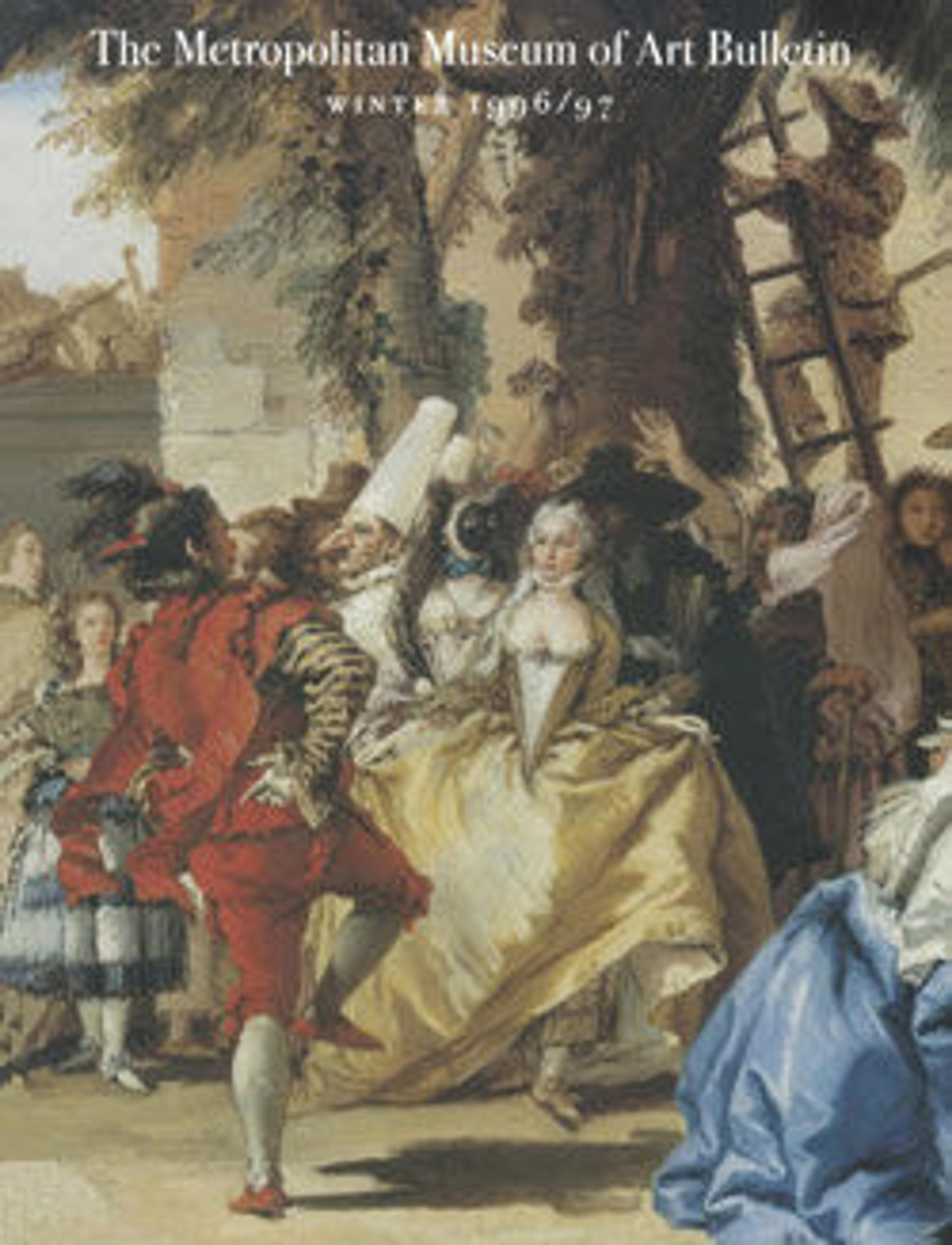Allegorical Figure Representing Asia
This work is part of a series of allegorical representations of the Four Continents that originally served as overdoors. Giovanni Domenico Tiepolo based his figure of Asia on symbols codified in Cesare Ripa’s Iconologia (1593): the palm branch and camel. Like representations of saints or other figures that artists aimed to identify, these attributes were important signals to historical audiences, though in the case of the Four Continents, they eventually fed into racialized stereotypes. This panel was probably detached around 1900 from the Palazzo Valle Marchesini Sala in Vicenza.
Artwork Details
- Title:Allegorical Figure Representing Asia
- Artist:Giovanni Domenico Tiepolo (Italian, Venice 1727–1804 Venice)
- Medium:Fresco, transferred to canvas
- Dimensions:32 1/4 x 41 3/4 in. (81.9 x 106 cm)
- Classification:Paintings
- Credit Line:Bequest of Grace Rainey Rogers, 1943
- Object Number:43.85.17
- Curatorial Department: European Paintings
More Artwork
Research Resources
The Met provides unparalleled resources for research and welcomes an international community of students and scholars. The Met's Open Access API is where creators and researchers can connect to the The Met collection. Open Access data and public domain images are available for unrestricted commercial and noncommercial use without permission or fee.
To request images under copyright and other restrictions, please use this Image Request form.
Feedback
We continue to research and examine historical and cultural context for objects in The Met collection. If you have comments or questions about this object record, please contact us using the form below. The Museum looks forward to receiving your comments.
